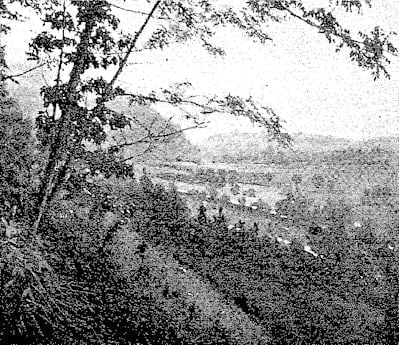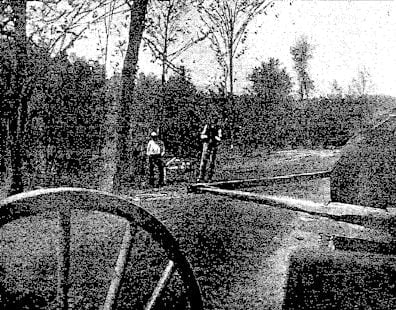The enumeration for the census of 1890 of the Eastern Band of Cherokees of North Carolina was made by the regular enumerators for the state of North Carolina. The United States Indian agent, James Blythe, a Cherokee (Dis-qua-ni, Chestnut Bread), furnishes the following data collected during personal visitations:
The total number of Cherokees is 1,520: males, 774; females, 746. All wear citizens’ clothing. 365 over the age of 20 and 300 under the age of 20 can read, and 180 under the age of 20 can write English. This latter fact is attributable to the efficient school system. 620 Indians can use English enough for ordinary intercourse. The number of children of school age is given as 403, and there are school accommodations for 275. There are 5 schoolhouses owned by the Indians, valued at $600. They also own and occupy 256 one-story log or blockhouses.
Eastern Cherokee Health
1 case of chronic paralysis and 2 of pneumonia are reported. 3 deaf and dumb, 2 blind, and 2 idiotic persons are also mentioned. The number of children under the age of 1 year is given as 38, but the number and causes of death must be supplied from the regular enumeration.
Eastern Cherokee and White Intruders
Agent Blythe, who has had the special co-operation of the United States authorities in investigating violations of the laws relating to the lands of the Indians, reports 56 white families as unlawfully upon the tract, occupying and farming 6,000 acres, most of it good land.
Eastern Cherokee Land
About 20,000 acres of land are classed as arable or tillable and 30,000 acres as only fit for grazing. The remainder, consisting of many mountain tracts, is valuable for timber.
The Indians cultivated 2,400 acres during the year; which, with the 6,000 acres unlawfully occupied and cultivated by white people, make 8,400 acres cultivated. The description of this laud, together with the maps, is given elsewhere. 500 acres were broken during the year and 3,000 acres am fenced. 1,000 rods of fencing were built or rebuilt during the year. Special reference is made to this careful fencing.
Eastern Cherokee Crops
Crops of the value of $3,859.50 were raised during the year, as follows: wheat, 300 bushels, $300; oats, 125 bushels, $62.50; barley and rye, 65 bushels, $32; corn, 6,000 bushels, $3,000; potatoes, 400 bushels, $200; turnips, 150 bushels, $15; onions, 50 bushels, $25; beaus, 300 bushels, $225.
Eastern Cherokee Stock
Horses, 38, $$1,130; mules, 2, $150; cattle, 210, $2,420; swine, 300, $900; sheep, 160, $480; fowls, 1,800, $180.
The average earnings of the male Indians above 21 years of age is about $106 per year; this includes lumbermen. The wealth of the band is placed at an average of $217.25 per capita. Wages are very low in the mountains of North Carolina, but the cost of living is small, and the Cherokees earn as much and live as well as the white people about them.
The report of Special Agent Carrington is mainly as to the condition of these Indians in the census year 1890.





